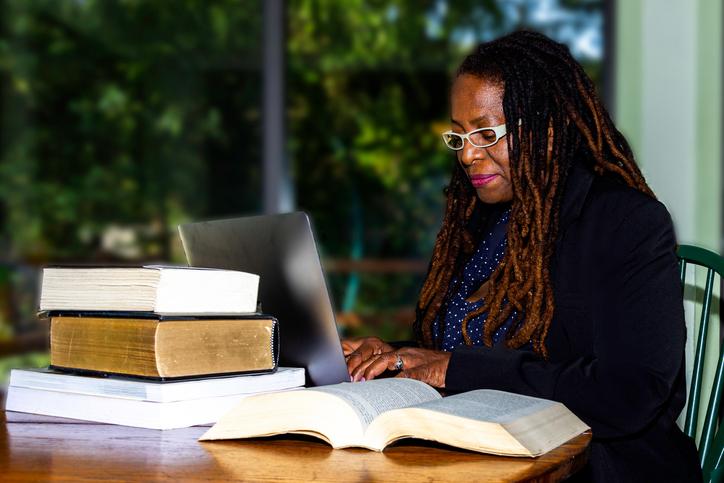Women of colour are significantly under-represented in higher education leadership positions. Although much progress has been made, which is crucial given the prevalence of women and people of colour in the student population, this must remain a priority for the sector. Women of colour leave a legacy that extends far beyond their tenures.
In my work as vice-president for strategic affairs and diversity and professor of education at Virginia Tech, I am both a firm believer in and passionate advocate for the profound legacies that female leaders of colour can leave in HE.
I knew from a young age that racism and sexism are rampant, devastating and far-reaching. I followed my parents’ example and turned to education to give me the legitimacy I knew I’d need to make a difference. I obtained five degrees so my qualifications would be unassailable. Once I finished my formal education, I pursued an informal education about the world of power, wealth, networks and influence. I saw the way power operated in my own journey as an attorney at a large law firm in Nashville. I experienced the challenges of being the only African American woman attorney out of almost a hundred, and navigated issues of race and gender, including comments about my hairstyle of dreadlocks and my refusal to wear skirts.
- What we can learn from Black women academics in the UK
- THE podcast: how to navigate HE as a woman of colour
- As a Black, female student, I wish I’d had a peer mentoring scheme
After almost 10 years working as a lawyer in compliance, real estate, construction and governance, I committed to finding a profession that aligned with my passion for social justice, so I could influence the redistribution of power, privileges and opportunity. I moved professionally into the work of diversity and inclusion, affirmative action, equal employment opportunity and disability rights. I also began to focus on research and scholarship and became a tenured faculty member.
Before I accepted a position with Virginia Tech, I did my due diligence. I saw the sincerity behind university president Timothy Sands’ commitment to diversity, equity and inclusion initiatives. Resources were attached to the vision, and I felt that the institution was ready to embark on a different journey.
Seven ways that universities can support diversity on their campuses
Here’s what we’re doing at Virginia Tech that might be helpful strategies for other institutions:
- Affordability: HE institutions need to find ways to defray costs, especially for under-resourced students. At Virginia Tech, we launched Virginia Tech Advantage last year. This initiative focuses on increasing support and funding for students from economically vulnerable backgrounds.
- Learning environment: Community and culture matter, and we are openly discussing inclusive pedagogies and ways to foster inclusive environments to create a richer and more dynamic learning environment for all students.
- Mentorship and empowerment: Female leaders of colour need to feel supported and guided. One example of what we’re doing to undergird female leaders of colour is the Faculty Women of Color in the Academy (FWCA) national conference, which I launched 12 years ago. The FWCA is a unique educational and professional opportunity for Indigenous and women of colour in HE to network, engage and learn with colleagues from around the country. It helps women heal through sisterhood and kinship. The conference and quarterly healing hours benefit 1,000 women of colour annually.
- Community engagement and partnerships: Universities must find ways to reach beyond campus boundaries to show children and youth who have historically been under-represented that higher education is possible for them. For example, Virginia Tech hosts the Black College Institute (BCI) and the Hispanic College Institute (HCI) for high school students, which have helped many future Hokies to find community and friendship long before classes begin. The College Access Collaborative is another important community resource for teachers, counsellors and families in Virginia to learn about Virginia Tech.
- Research and innovation: In higher education, research is pivotal, including research that addresses social justice, equity and inclusion. Exploring diverse perspectives promotes innovation and invites new avenues of knowledge creation in areas such as civic engagement, public interest technology and environmental justice.
- Amplifying perspectives and voices: It is important to encourage faculty, staff and students to explore others’ perspectives through diverse authors, performances, historical events and cultural contexts. We emphatically promote inclusion and belonging through InclusiveVT, the institutional and individual commitment to Ut Prosim (That I May Serve) in the spirit of community, diversity and excellence.
- Advocacy for women and minority faculty: We are actively engaged in diversifying faculty demographics to broaden perspectives in the academic discourse. One example is Virginia Tech’s Future Faculty Diversity Program and our mentoring and faculty success programmes.
In the realm of higher education, emerging female leaders of colour are transforming the landscape, and bringing innovative perspectives to the forefront. As we continue to shape the landscape of higher education, our impact will reverberate through generations, inspiring a new era of leaders who will carry the torch forward.
Menah Pratt is vice-president for strategic affairs and diversity at Virginia Tech and professor of education as well as chair-elect for the Council on Diversity, Equity, and Inclusion of the Association of Public and Land-Grant Universities. Her latest book, Blackwildgirl: A Writer’s Journey to Take Back Her Superpower, will be published by She Writes Press in April.
If you would like advice and insight from academics and university staff delivered direct to your inbox each week, sign up for the Campus newsletter.




comment